What are Splicing Screens
Splicing screens, commonly known as video walls or display walls, are innovative visual display systems that combine multiple screens to create a single, larger and more impactful display surface. These screens are engineered to work in unison, displaying a cohesive image or multiple images across the individual panels. They are designed for users who require expansive display areas without the limitations of a single screen's size constraints—ideal for environments where information needs to be shared with a large audience or detailed visuals are necessary.
The fundamental principle behind splicing screens is relatively straightforward: each screen displays a portion of the overall image, and when placed together, they seamlessly form the full picture. Advanced technology ensures that the edges between screens, known as bezels, are minimized to reduce disruption in the visual flow. This creates an almost uninterrupted viewing experience for audience members. Software solutions manage the content across these screens, ensuring uniformity in color, brightness, and synchronization.
Splicing screens are versatile and cater to a wide range of applications. They are used in control rooms for real-time monitoring, in retail stores for impactful advertising, at exhibitions to attract and engage visitors, and in corporate environments for presentations and meetings. With the capability to operate around the clock, these displays are also ideal for public information in places like airports and subway stations where continuous service is a requirement.
Types of Splicing Screens
Different settings call for different types of splicing screens, each with its unique features and common use cases:
LED Splicing Screens: These offer vibrant full-color displays with wide viewing angles and high brightness levels, which makes them suitable for both indoor and outdoor applications. LED splicing screens can often be found in outdoor advertising, concerts, or as stage backdrops where they need to be visible even in direct sunlight.
LCD Video Walls: Known for their thin bezels and high-resolution image quality, LCD video walls provide a more seamless splicing experience. They are frequently used in indoor settings such as corporate lobbies, control rooms, and retail environments where detailed imagery and a sleek appearance are required.
Transparent LED Screens: These innovative displays allow viewers to see through them while still displaying an image. They can transform windows into dynamic advertising spaces without blocking light and are perfect for storefronts or exhibition spaces where maintaining visibility is important.
Interactive Splicing Screens: Touch-enabled splicing screens enable interaction with the displayed content. They can be found in educational settings for collaborative learning, museums for interactive exhibits, or retail environments for engaging customer experiences.
How to choose Splicing Screens
Selecting the appropriate splicing screen requires careful consideration of several factors:
Firstly, assess the environment where the screen will be used. For brightly-lit areas or outdoor settings, LED splicing screens with higher brightness levels would be ideal. In contrast, indoor environments with controlled lighting might benefit from LCD video walls that offer sharp images with less concern about ambient light.
Additionally, consider the purpose of the content display. For interactive educational content or customer engagement scenarios, an interactive splicing screen with touch capabilities could provide added value. On the other hand, if the goal is to showcase high-definition videos or images with precise details, then choosing a screen with higher resolution will be important.
Lastly, it's important to factor in the physical space available and how it might constrain or dictate the configuration of your splicing screen setup. The size and number of individual panels needed will determine not only the overall dimensions of your video wall but also influence aspects such as resolution and aspect ratio.
Best Splicing Screens on Alibaba.com
For businesses seeking advanced display solutions that captivate audiences and deliver messages with impact, Alibaba.com stands out as a premier source of splicing screens. This global marketplace connects buyers with a vast network of suppliers offering an extensive range of splicing screen options suitable for various applications—from dynamic advertising publishings to sophisticated displays in exhibition halls.
The strength of Alibaba.com lies in its commitment to facilitating trade across borders effortlessly. Suppliers on Alibaba.com provide datasheets and EDA/CAD models that help buyers make informed decisions tailored to their specific needs. Whether it's full-color LED modules for outdoor displays or narrow bezel LCD panels for a sleek video wall setup indoors, Alibaba.com presents options that cater to diverse business requirements.
Moreover, Alibaba's Trade Assurance service builds confidence among buyers by safeguarding payments until order fulfillment is confirmed. With an extensive selection of products from OEMs to original manufacturers and retailers catering to every conceivable application place from hospitals to shopping malls, Alibaba.com empowers businesses globally to find exactly what they need for their commercial display projects without compromising on quality or service.
Common FAQs for Splicing Screens
What are the advantages of using splicing screens over traditional single displays?
Splicing screens provide larger display surfaces which are ideal for high-impact visuals in public spaces or detailed imagery in professional settings. They offer greater flexibility in size and configuration, allowing for customized solutions tailored to specific environments and viewing distances.
Can splicing screens be used outdoors?
Yes, certain types of splicing screens, like LED modules with high brightness levels and weather-resistant designs, are suitable for outdoor use. They can effectively display content in various lighting conditions, including direct sunlight.
How do bezels affect the viewing experience on splicing screens?
Bezels are the frames between individual screens in a video wall setup. Minimized bezels lead to a more seamless image and an improved viewing experience, making the content appear as one large, cohesive display rather than separate panels.
What should be considered when choosing the resolution for a splicing screen?
The resolution choice should be based on the content's nature and the viewing distance. Higher resolutions are recommended for displaying detailed images or when viewers will be close to the screen, while lower resolutions may suffice for larger viewing distances or less intricate content.
Are interactive splicing screens available?
Yes, interactive splicing screens with touch capabilities exist and are commonly used in educational settings, retail environments, and exhibitions to engage users and provide interactive experiences.
What is meant by "seamless splicing" in LED display screens?
Seamless splicing refers to the process of aligning LED display panels closely together with minimal gaps between them, creating a continuous image without noticeable lines or disruptions across the panels.
How does content management work with splicing screens?
Content management for splicing screens is typically handled by specialized software that distributes and synchronizes media across multiple displays, ensuring uniformity in color, brightness, and playback.
Can I customize the size and shape of a splicing screen?
Splicing screens offer modularity and can be customized to various sizes and shapes by adding or removing individual panels to fit specific spatial requirements and design preferences.
Is it possible to integrate splicing screens with existing AV systems?
Many splicing screen systems can be integrated with existing audiovisual (AV) setups through compatible input/output interfaces and control protocols, allowing for centralized management of multimedia content.
What power requirements do splicing screens have?
Power requirements for splicing screens depend on the type of display technology (LED or LCD), the total size of the video wall, and the brightness needed for the application. It's essential to ensure that your facility's power supply can accommodate these requirements.
How do I maintain and service a splicing screen setup?
Maintenance generally involves regular cleaning of the screen surfaces and monitoring system performance. Servicing may require technical support from the supplier or manufacturer, especially if it involves hardware or software issues.
What types of businesses benefit most from using splicing screens?
Businesses that require high-impact visual communication such as retail stores, exhibition centers, corporate headquarters, transportation hubs, and entertainment venues often utilize splicing screens to engage their audience effectively.



















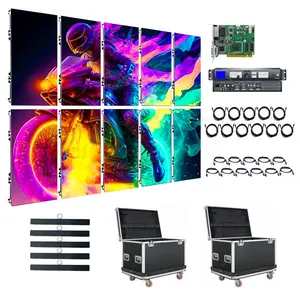
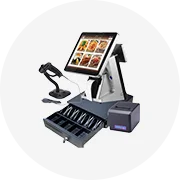


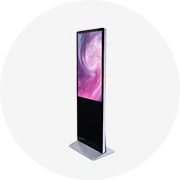

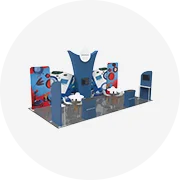



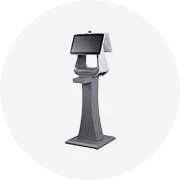










 浙公网安备 33010002000092号
浙公网安备 33010002000092号 浙B2-20120091-4
浙B2-20120091-4